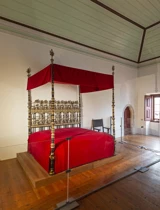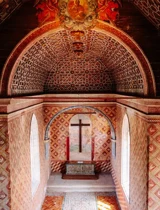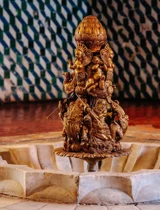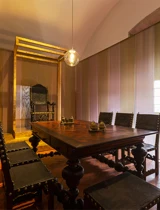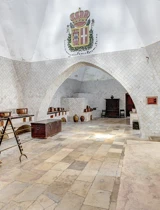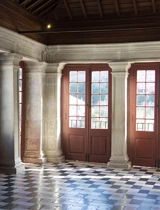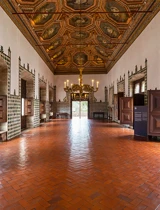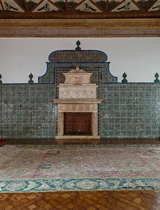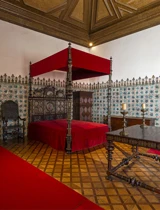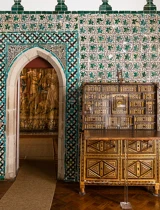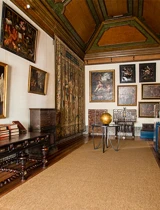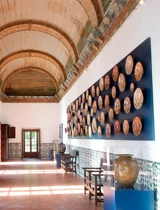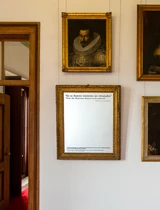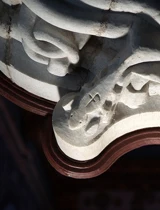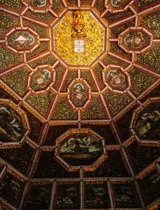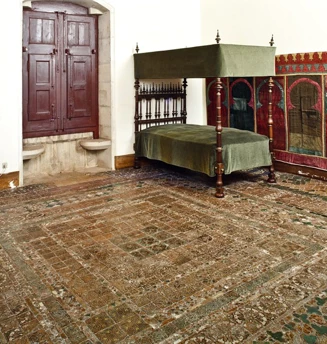
King Afonso VI Chamber
King Afonso VI Chamber
This is one of the chambers in the palace of King Dinis and Isabel of Aragon, the “Holy Queen” (13th century), where King Afonso VI (1643–1683) is thought to have been imprisoned in the last years of his life. The ceramic floor is one of the oldest (c. 1430–1440) in the entire building.
Discover the objects on display in this room.

Christ of the Cane
- Bento Coelho da Silveira (attrib.)
- Portugal, 2nd half 17th century
- Oil on canvas
- Inv. No. PNS3625
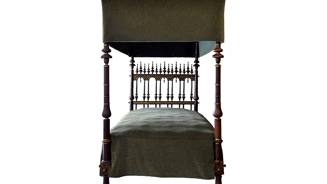
Bed
- Portugal, 17h century
- Rosewood and gilded metal
- Inv. No. PNS3012
This bed was moved here from the National Palace of Ajuda in 1939 to create an atmosphere that better captured the imprisonment of King Afonso VI (1643–1683).
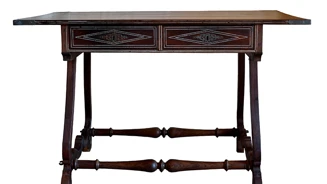
Table
- Spain, 17h century
- Rosewood, ivory and gilded metal
- Inv. No. PNS2962
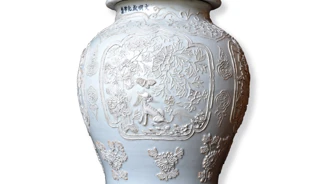
Pot
- China
- Dynasty Ming - reign Chenghua (1465-1487)
- Sandstone
- Inv. No. PNS30
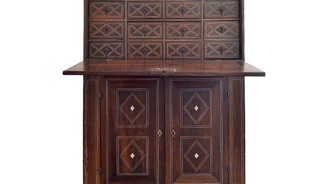
Cabinet
- Spain, 17h century
- Rosewood, ivory and gilded metal
- Inv. No. PNS3039
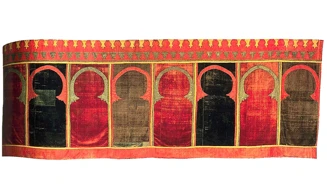
Wall cloth
- North of Africa, 19th century
- Velvet and silky damask
- Inv. No. PNS3568
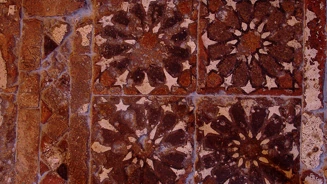
Ceramic Floor
In this room, you will find one of the oldest ceramic floors in Portugal, perhaps from the same period as the one in the Chapel. Some historians hold that it was laid in the mid-15th century.


